The unique location of the Hyrcanian forests along the Caspian Sea and the surrounding mountains has created a special climate for plant species not found in other forests worldwide. This has led to the emergence of rare plant and animal species.
Most of the Hyrcanian forests are in Iran, but a small part is in Azerbaijan, allowing both countries to use these natural resources. Regardless of their location, these forests are part of the world’s great wealth and a heritage for all people, making their preservation a significant responsibility for Iran and Azerbaijan.
If you’re interested in learning more about these breath-taking forests, join us in this article. In this article Parsi Tours team, a professional Iran tour operator, will introduce these forests, their geographical location, vegetation, wildlife, and the most famous forest areas in Iran.
What are the Hyrcanian Forests?
The Hyrcanian forests cover a significant part of northern Iran and a small part of Azerbaijan. Geologists and scientists estimate the age of these forests to be about 40 million years, dating back to the Tertiary period. Due to their age, these forests can be likened to a vast natural museum, containing fossils of thousands of years old plants.
These forests are like a green belt in the south of the Caspian Sea, with very dense trees. Considering the location and climate of these forests, this region is one of the world’s richest water reserves, acting like a big dam preventing floods in northern Iran. “Hyrcan” is an old dialect of the word “Gorgan,” a large province in northern Iran and a region in Azerbaijan. “Jorjan” is another name for Gorgan, used in the past for the northern forests. According to some documents and readings of ancient Iranian inscriptions (Achaemenid period), this region was previously called “Varkan,” but now, with the agreement between Iran and Azerbaijan, it’s named “Hyrcan.”
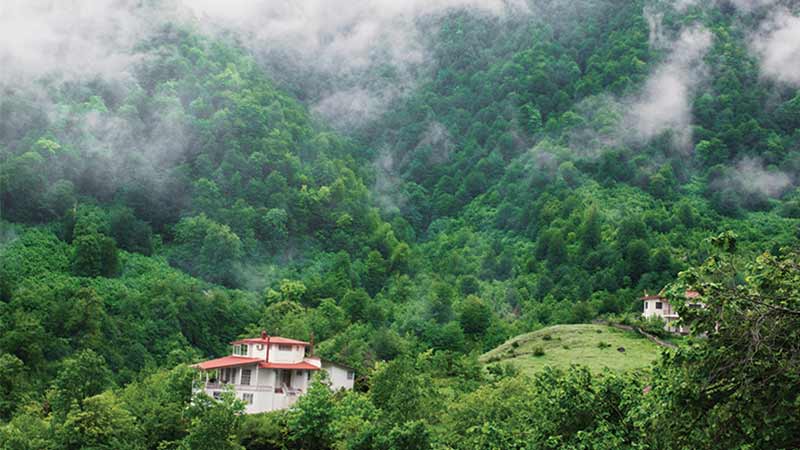
Some plants in the Hyrcanian forests are unique and cannot grow in other forests worldwide, making these forests more valuable. Similar examples of the Hyrcanian forests in Iran and Azerbaijan are limited in the world. The destruction of forests in many parts of the world and Iran has caused irreparable damages, including air pollution and devastating floods.
The ancientness and plant diversity of the Hyrcanian forests in Iran and Azerbaijan led to their registration as a natural heritage site by UNESCO in 2019. The first request for registration by Azerbaijan was not approved due to the majority of these forests being in Iran. However, after further pursuit by Iran, these forests were registered as a joint heritage of both countries. They are recognized as the second natural site from Iran after the Lut Desert in the UNESCO World Heritage List.
Where are the Hyrcanian Forests?
The Hyrcanian forests cover a wide area in the south of the Caspian Sea and the north of the Alborz Mountain range. These forests are located in Iran and Azerbaijan and spread across six northern provinces of Iran. They start from Gildagh in Azerbaijan and extend through East Azerbaijan, Ardabil, Gilan, Mazandaran, Golestan, and Semnan provinces, reaching North Khorasan.
The Hyrcanian forests have an area of about two million and 125 thousand hectares, approximately two million hectares in Iran and 20 thousand hectares in Azerbaijan. About 50% of these forests have been destroyed over the years, and now only a limited part is preserved as protected areas. These forests are over 40 million years old and were home to early life forms in ancient times.
Overall, the Hyrcanian forests make up only 1% of Iran’s area, and only 10% of these forests are protected. Twelve geographical spots in these forests have been proposed for separate registration in the UNESCO World Heritage List.
The diversity of the Hyrcanian forests in different altitudes and their close proximity to the sea have significantly impacted the variety of plant and animal life in these areas, which we will examine more closely later.
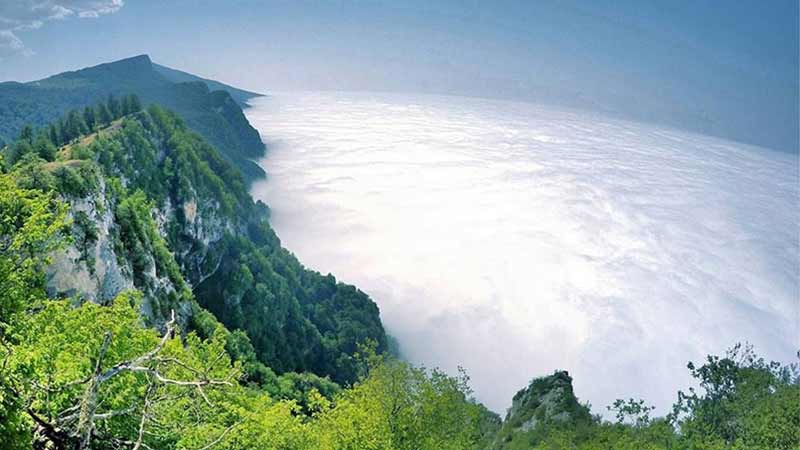
Vegetation of the Hyrcanian Forests
The age of the Hyrcanian forests goes back millions of years, and the remaining plant diversity indicates the unique climatic conditions in these forests. The specific climate and weather of the Caspian Sea’s coastline create conditions for the growth of unique plants in the Hyrcanian forests. The variety of plants and trees in these forests has attracted the attention of geologists worldwide. More than 80 types of trees, 50 species of shrubs, and various native species are seen in the Hyrcanian forests, many of which do not grow in other parts of the world. In fact, many of these plants would have gone extinct if they had grown elsewhere.
Although a significant part of this region has been destroyed over the years, notable examples of plants are still seen in these forests. The fossils of extinct species in the forests have been the subject of research by geologists and biologists for years. The plants and trees in these forests, besides their effective role in supplying the world’s oxygen, also significantly impact water reserves. According to research, between 500 to 2000 square meters of water is stored in every 10,000 square meters of soil in these forests. The high permeability of the soil in the Hyrcanian forests leads to abundant water reserves in this area. Considering these factors, the role of plants and trees in the Hyrcanian forests in the ecosystem of the surrounding environment and the world is evident.
Among the different species of trees and plants in the Hyrcanian forests, broadleaf and coniferous trees can be mentioned. Many trees in these forests are evergreen or have a short autumn period. Depending on the altitude of different parts of the forest, the types of plants also vary. The type of trees in lower altitude areas differs significantly from the plants and trees in higher locations. Areas closer to the sea are more humid, and many plants in these regions have survived for years due to the moisture and temperate climate.
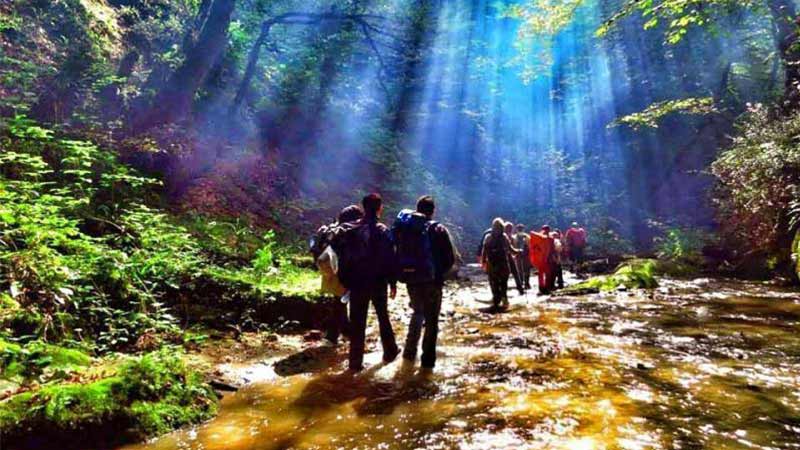
Overall, the climate within the Hyrcanian forests can be divided into three categories: dry summer weather, humid autumn climate, and mild winter weather. The climate varies in different parts of the forest. This climatic diversity in these forests is less common in other parts of the world. Some of the most important trees in these forests are beech, maple, hornbeam, alder, rowan, elm, yew, boxwood, wild cherry, fig, and various types of boxwoods.
Different trees in the Hyrcanian forests grow in unique areas. Based on the slope of different areas and the altitude of the forest, the variety of trees and plants differs in various parts of these forests. Generally, in higher areas of the Hyrcanian forests, species of laurel, juniper, holly, and yew trees can be observed. The slopes, which have a lower altitude compared to the top of the mountains, are places for the growth of trees like elm and beech.
Beech trees need a specific geographical location to grow, making the widespread coverage of these trees one of the most prominent features of the Hyrcanian forests. Persian ironwood and hornbeam trees also grow in the middle slopes with lower altitudes, and different types of Persian ironwood, alder, oak, and short shrubs and boxwoods grow in lowland areas.
Shrubs and bushes of hawthorn, wild pomegranate, wild plum, wild apple, tarragon, medlar, cornelian cherry, and various types of raspberries are also seen in the Hyrcanian forests. Some of the plants in these forests are known among biologists as unique and rare species worldwide, including trees like Persian ironwood, Zeravshan pine, and juniper. The areas covered by beech trees are very dense and abundant, and this tree covers many parts of the Hyrcanian forests.
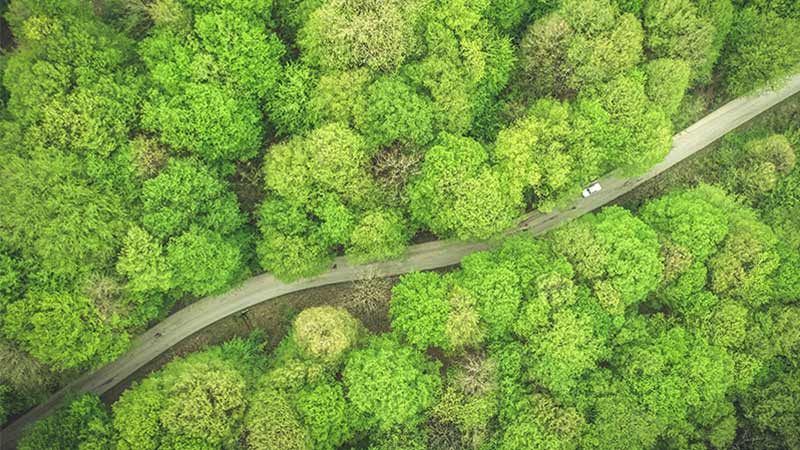
Wildlife of Hyrcanian Forests
The Hyrcanian Forests, over their long existence, have hosted a remarkable variety of animals. Various species of birds and mammals have lived in these forests, some of which are now extinct. There were close to 300 different bird species and about 100 mammal species; however, many of them no longer exist today. Reptiles are also among the other animals found in the Hyrcanian Forests.
Bird species include eagles, owls, grey ducks, falcons, pheasants, quails, grey ducks, vultures, hoopoes, woodpeckers, grouse, starlings, and broad-billed ducks. One of the most endangered bird species currently in the Hyrcanian Forests is the Caspian pheasant. An interesting aspect of the Hyrcanian Forests is the presence of about 70 types of fish in the waters around the Arasbaran Forests.
Famous animals in these areas include brown bears, leopards, wolves, jackals, otters, hedgehogs, rabbits, badgers, forest mice, and wild cats. Mammals like red deer, goats, roe deer, and Persian fallow deer, which used to live in most parts of the Hyrcanian Forests, have largely disappeared and can only be found near Amol and Golestan National Park. Black-tailed foxes and Caspian ponies are among the rarest mammals currently living in these forests. The Caspian pony lives in the forests around Amol and was first discovered in the Hyrcanian Forests.
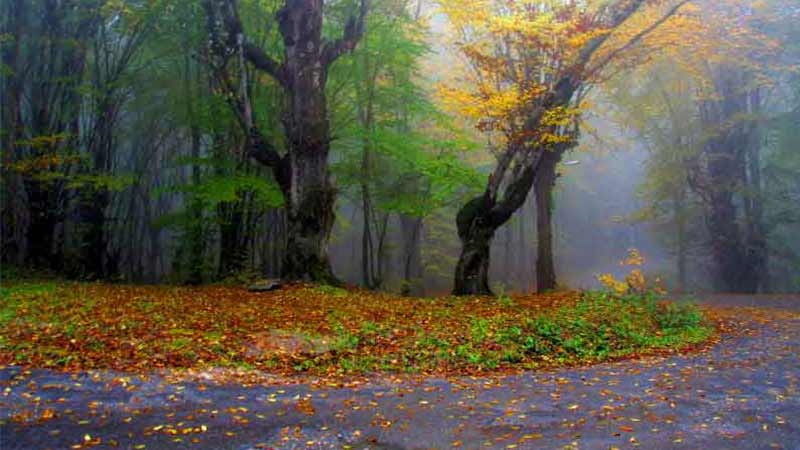
Importance of the Hyrcanian Forests
The Hyrcanian Forests are among the most important natural reserves in the world. Over the years, due to urbanization and ignorance of the dangers of forest destruction, large parts of these forests have suffered severe damage. This trend and its impact on human living environments have drawn experts’ attention to the high importance of these forests.
The Hyrcanian Forests are like a giant air purification factory. Their vast area plays a significant role in producing oxygen and clean air for the surrounding regions; so much so that removing these forests could create a serious problem in supplying the world’s oxygen needs. On the other hand, the spread of mechanical life increases the need for producing clean air and purifying it. The extensive vegetation and soft soil in these forests result in high water absorption. Due to their proximity to the Caspian Sea and their unique geographical location, the Hyrcanian Forests experience very high and intense rainfall. Only the presence of these dense forests can prevent flooding and ensure the continuation of human life in the surrounding cities. The absorption of rainwater in these forests has also created significant water reserves.
One of the most unique features of the Hyrcanian Forests is their untouched and amazing nature. The beautiful nature of the Hyrcanian Forests attracts any tourist. One of the main reasons for attracting domestic and foreign tourists to various regions is the remarkable nature of this area. Many countries, with very limited capacities in forest areas, strive to attract tourists. The Hyrcanian Forests can be considered one of the most prominent capacities of northern Iran for attracting foreign tourists. Investing in the tourism industry of northern Iran can attract many nature-loving tourists from outside the country.
The proximity of the Hyrcanian Forests to the sea doubles the pleasure for tourists. Due to the growth of unique plant and animal species in these forests, traveling to these forests can be very useful for geologists and researchers. The study of plant and animal fossils from millions of years ago in these forests has made it possible to obtain unique information in the fields of biology and geology.
In addition to the mentioned points, the presence of a natural life cycle in the Hyrcanian Forests affects the global ecosystem. With the extinction of any of the animals and plants in these areas, irreparable damage is inflicted on the life cycle in the world. The rare animal and plant species in the Hyrcanian Forests are not found anywhere else in the world, which doubles the importance of these forests in the world. Registering this region on the UNESCO World Heritage List confirms this.
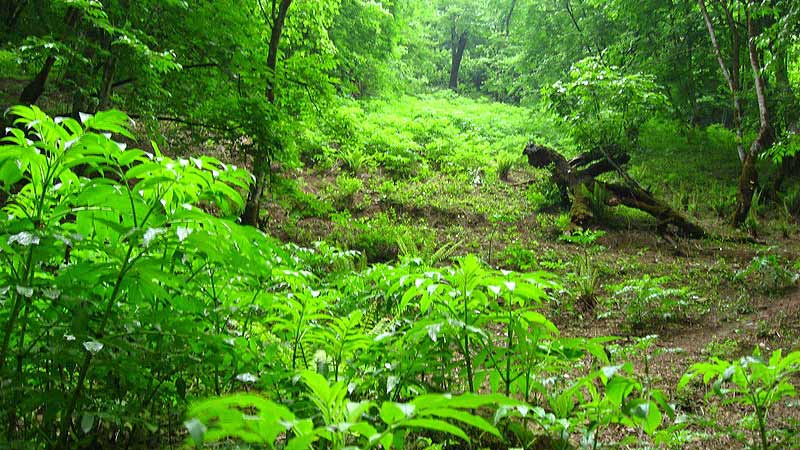
Destruction of the Hyrcanian Forests
Currently, one of the main concerns of environmental activists in the world is the preservation of natural resources and the protection of forests. The destruction of forests will have an irreparable impact on human life in the world, and the danger of losing forests is actually equivalent to the danger of destroying future generations. At first glance, preserving natural resources may not seem very important, but according to existing research documents, the destruction of forests can be tantamount to approaching the end of human life on Earth. Over the years, more than half of the Hyrcanian Forests have been destroyed, and unfortunately, this destructive trend continues.
Conclusion
In summary, the Hyrcanian Forests are one of the most amazing natural attractions in Iran. It is also an important natural heritage with a rich history and diverse wildlife, some unique to the area. Located along the Caspian Sea, these forests show how the climate has changed over time. Protecting them is essential not just for their biodiversity but also for their cultural and historical value. As they face environmental and human challenges, it’s important to preserve them for future generations.
If you’re interested in exploring the stunning Hyrcanian forests in northern Iran and witnessing its beauty, share your experiences with us. Reading your comments will be a pleasure for us and other users.



